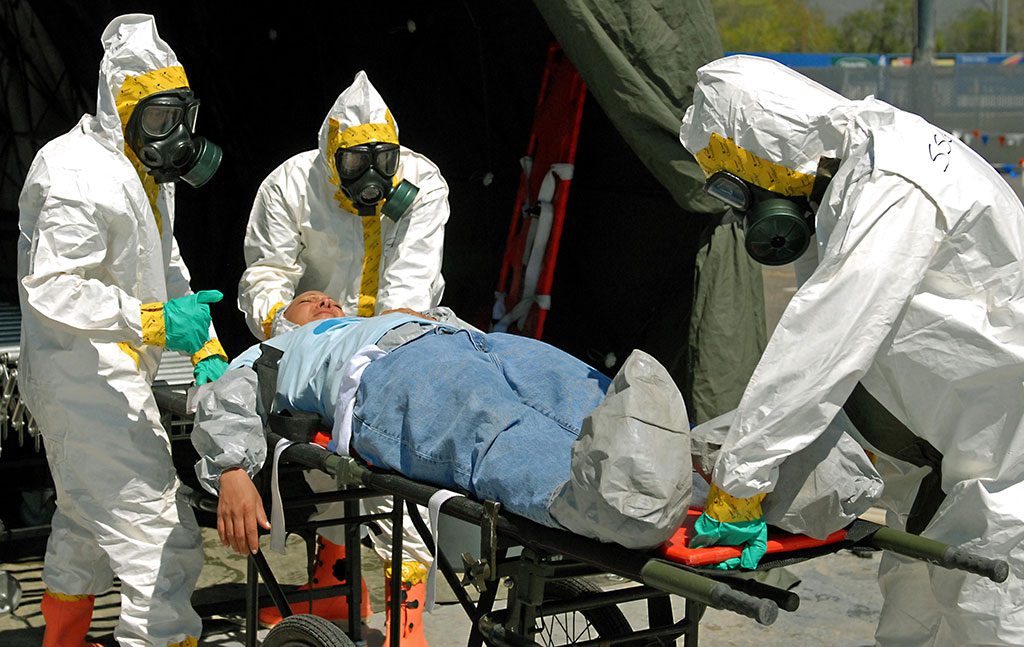Medical countermeasures known as “resurrectors” may one day be incorporated into a combination antidote for nerve agents and organophosphate pesticides and could increase the currently small window of time to treat organophosphate nerve agent (OPNA) poisoning.
These resurrectors could represent a significant breakthrough in the toolkit to fight against nerve agent and organophosphate pesticide poisoning. If successful, this innovative approach will mean more kinds of nerve agent and organophosphate pesticide poisonings are treatable, and there would be more time to rescue casualties after poisoning.
Although banned by the Chemical Weapons Convention in 1997, chemical warfare agents such as OPNAs continue to be used in the 21st century, including a mass casualty strike during the Syrian civil war and assassination attempts by other state actors. Additionally, while organophosphate pesticides are banned in many countries, pesticide poisoning remain a public health problem. OPNAs and organophosphate pesticides both act to block and inhibit the function of the enzyme acetylcholinesterase (AChE) by physically binding to it.
The purpose of AChE in the body is to promote normal turnover or recycling of the signaling molecule acetylcholine. If AChE is blocked by an organophosphate chemical, the nervous system is overwhelmed with the nerve signal, leading to serious health effects in a condition known as cholinergic crisis. The symptoms of cholinergic crisis are known by the acronym SLUDGE: salivation, lacrimation (tears), urination, defecation, gastrointestinal upset, and emesis (vomiting). If untreated, cholinergic crisis can lead to convulsions, respiratory distress, and death.
Today, there is an approved treatment for organophosphate poisoning, a component of which is a drug that can restore OPNA-bound AChE to its native state. Because they turn the AChE enzyme back on after it has been disabled, these drugs are called “reactivators” and have been studied for over 60 years for their ability to kick the organophosphate out of AChE, which rescues AChE and restores it to working condition. The rescued AChE can then resume its normal function in controlling acetylcholine levels, letting the cholinergic crisis subside.
The AChE reactivator drugs available today are capable of rescuing AChE that has been inhibited by a variety of OPNAs and organophosphate pesticides, but they need to be used quickly after organophosphate exposure. One reason for this is because, over time, AChE inhibited by an organophosphate or OPNA converts to a form called “aged” AChE, which cannot be reactivated by existing reactivator therapeutics. For decades, AChE that has undergone aging has been considered as irreversibly blocked and not able to be rescued.
The Defense Threat Reduction Agency’s (DTRA) Chemical and Biological Technologies Department in its role as the Joint Science and Technology Office (JSTO) for Chemical and Biological Defense is currently investing in work at MRIGlobal and Ohio State University (OSU) to develop candidate MCMs with innovative mechanisms of action.
Even though aged AChE is commonly perceived as a lost cause, recent breakthroughs published by researchers at OSU demonstrated the first chemical compounds able to rescue aged AChE back to normal activity. These innovative, small-molecule chemical compounds and candidate MCM “resurrector” drugs go beyond just reactivation as they may be able to work through a new mechanism of action. So far, the OSU compounds have been shown to resurrect aged AChE in a test tube after blocking with organophosphate chemicals that are surrogates for nerve agents.
The current work DTRA-JSTO is investing in at MRIGlobal and OSU uses cutting-edge chemistry methods to design, synthesize, and test newer generations of resurrector compounds for their ability to treat organophosphate nerve agent poisoning.
READ ALSO:
Synthetic Approach to Realkyation of Aged Acetylcholinesterase Using Quinone Methide Precursors


